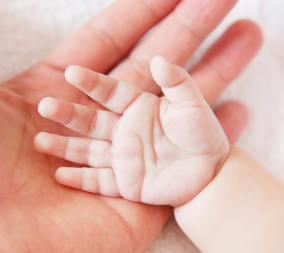Previously written and published by Dr. Smith in 2018
Every once in a while at the office, we are asked by our pregnant patients if “vaginal seeding” is offered or not to our patients who have a C-section. If this term is new to you, the American College of OBGYN (ACOG) Committee Opinion on vaginal seeding defines it as “the practice of inoculating cotton gauze or a cotton swab with vaginal fluids to transfer the vaginal flora to the mouth, nose, or skin of a newborn infant. The intended purpose of vaginal seeding is to transfer maternal vaginal bacteria to the newborn.”
Why, you ask, would someone want to consider this? The increased incidence of pediatric asthma, rashes and immune disorders in children has mirrored the increased incidence of cesarean sections and has made some wonder if this is because the C-section baby doesn’t get inoculated with his or her mother’s vaginal bacteria at birth.
Studies on Vaginal Seeding
The buzz about this topic stems from a small study in 2015 of 18 patients, 7 delivered vaginally and 11 by C-section where 4 of the C-section babies within 2 minutes of birth, had vaginal seeding take place. Cultures at one month showed that the 4 C-section babies who had vaginal seeding had bacteria more resembling the vaginally delivered babies. No further observations were made after one month, nor were the outcomes of allergy/asthma later in life evaluated. It is a mistake to draw any conclusions from a sample size so small. Whether membranes were ruptured or not prior to the C-section also wasn’t included. A more recent article published in 2017 with a larger sample size of 84 patients showed that while cultures of newborns at birth showed different bacteria based on mode of delivery (C-section vs vaginal), these differences were gone by six weeks after delivery.
Can vaginal seeding result in harm?
Sure! There are some aspects of the vaginal microbiome that one might not want to share, like herpes, Group A and B strep, gonorrhea, and chlamydia. Until more data are available, it would be prudent to avoid vaginal seeding. It is not surprising, then, that ACOG discourages this practice. I don’t know many Latin phrases other than E Pluribus Unum (one out of many) and Primum Non-Nocere (first, do no harm), the latter being one that they teach you in medical school. It can be boiled down to if nothing else, don’t cause a problem. This could be said about the scientific state of affairs surrounding the practice of vaginal seeding.
There is something, however, that you are doing to maximize both your and your baby’s health just by being a patient at our practice: Our C-section rate is really low! (click on the little circle with “I” in it under Maternity Care next to C-section) Just for fun, you can check out the other hospitals in town here, too. Our practice and the hospital are also great advocates of skin-to-skin (yes, even at the time of C-section) and breastfeeding. Vaginal seeding, fact or fiction? While our microbiome is a fascinating topic these days, I’m going to have to say, fiction.


















